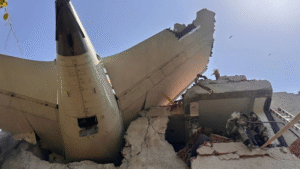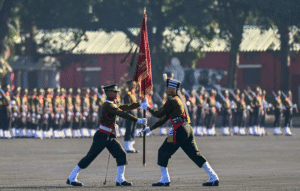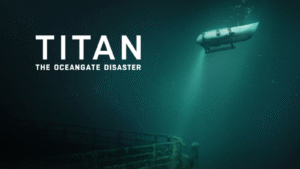G7 in the Crucible: Navigating West Asia and Trade Wars in Canada
The picturesque backdrop of the Canadian Rockies belies the intense geopolitical storm brewing as leaders of the Group of Seven (G7) convene for their 2025 summit. Originally conceived as a forum for economic cooperation among advanced democracies, this year’s agenda in Kananaskis is inevitably overshadowed by two immediate and pressing crises: the escalating Israel-Iran conflict and the disruptive shadow of US tariffs on China. This convergence of security and economic challenges forces the G7 to confront its collective ability to manage global instability and reaffirm its relevance in a rapidly shifting world order.

The Escalating West Asia Crisis at the Forefront
The West Asia crisis, particularly the escalating tit-for-tat missile attacks between Israel and Iran, has thrust regional volatility to the forefront of G7 discussions. What began as targeted strikes has spiraled into a more widespread conflict, prompting global alarm and a renewed sense of urgency among world leaders. The mere presence of this conflict on the agenda underscores the interconnectedness of global security; a flare-up in one region can have profound ripple effects on international trade, energy security, and the broader geopolitical landscape. For the G7, the challenge lies not only in condemning aggression and calling for de-escalation but also in exploring tangible diplomatic pathways to achieve a ceasefire and prevent further humanitarian catastrophe. The very real risk of the conflict widening, involving other regional actors and potentially disrupting vital global supply chains, demands a unified and decisive stance from the world’s leading economies. The presence of US President Donald Trump, a key player with often unpredictable foreign policy stances, adds another layer of complexity to these delicate discussions, raising questions about the prospect of a truly cohesive G7 approach.
The Shadow of US Tariffs and Global Trade Tensions
Simultaneously, the summit grapples with the ongoing US tariffs on China, a contentious issue that has strained alliances and threatened global economic stability. While host Canada initially hoped to focus on “uncontroversial themes” like building friendlier global supply chains and critical mineral agreements, the reality of trade tensions cannot be ignored. The G7 finance ministers’ earlier commitment to monitoring “nonmarket policies and practices” clearly signals concerns about China’s economic strategies, particularly its lending and trade practices that are perceived to create imbalances. For G7 members, particularly European nations and Japan, the immediate concern is navigating the implications of these tariffs and potentially securing bilateral trade deals with the US to avert further economic disruption. This element of the summit highlights a fundamental tension within the G7 itself: while unity against external threats is desired, divergent national economic interests and a protectionist turn by a key member can complicate a united front.
Conclusion: A Test for Multilateralism
Ultimately, the 2025 G7 Summit in Canada serves as a crucial barometer for multilateralism in a turbulent era. The leaders face the unenviable task of balancing immediate crisis management with long-term strategic planning. Their ability to forge a common path on the Israel-Iran conflict, exert diplomatic pressure, and address the destabilizing effects of trade protectionism will not only define the success of this particular summit but also speak volumes about the enduring relevance and efficacy of the G7 as a mechanism for global governance. The world watches closely to see if this gathering of powerful nations can move beyond expressions of concern to deliver concrete action, providing stability in an increasingly unpredictable world.



















